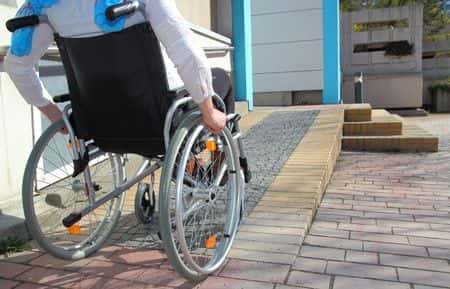Architecture Expert Comments on Fall Caused by Dangerous Entry Ramp
Updated on
Case Overview
This case involves an elderly male Plaintiff who slipped and then fell on a steep walkway that lead to the entrance of a pet supply store. The walkway in question had been designed and constructed at a very steep angle, which made /expert-witness/it/) unusually difficult to walk on – a fact that had been noted by many of the store’s customers in the past. The man, who was in good health prior to this incident, fractured his hip, arm, and shoulder due to the fall. The ramp in question had a very unusual /expert-witness/design/) and /expert-witness/construction/) – its longitudinal slope varied significantly across the left, center, and right of its surface, and there was also noted to be a significant cross slope from the right to the left side of the ramp as well. In addition to the dangerous nature of the ramp’s design and construction, there was no /expert-witness/guardrail/) or handrail for customers using the ramp to brace themselves on.
About the author
Joseph O'Neill
Joe has extensive experience in online journalism and technical writing across a range of legal topics, including personal injury, meidcal malpractice, mass torts, consumer litigation, commercial litigation, and more. Joe spent close to six years working at Expert Institute, finishing up his role here as Director of Marketing. He has considerable knowledge across an array of legal topics pertaining to expert witnesses. Currently, Joe servces as Owner and Demand Generation Consultant at LightSail Consulting.
Subscribe to our newsletter
Join our newsletter to stay up to date on legal news, insights and product updates from Expert Institute.
Sign up nowFind an expert witness near you
What State is your case in?
Subscribe to our newsletter
Join our newsletter to stay up to date on legal news, insights and product updates from Expert Institute.



